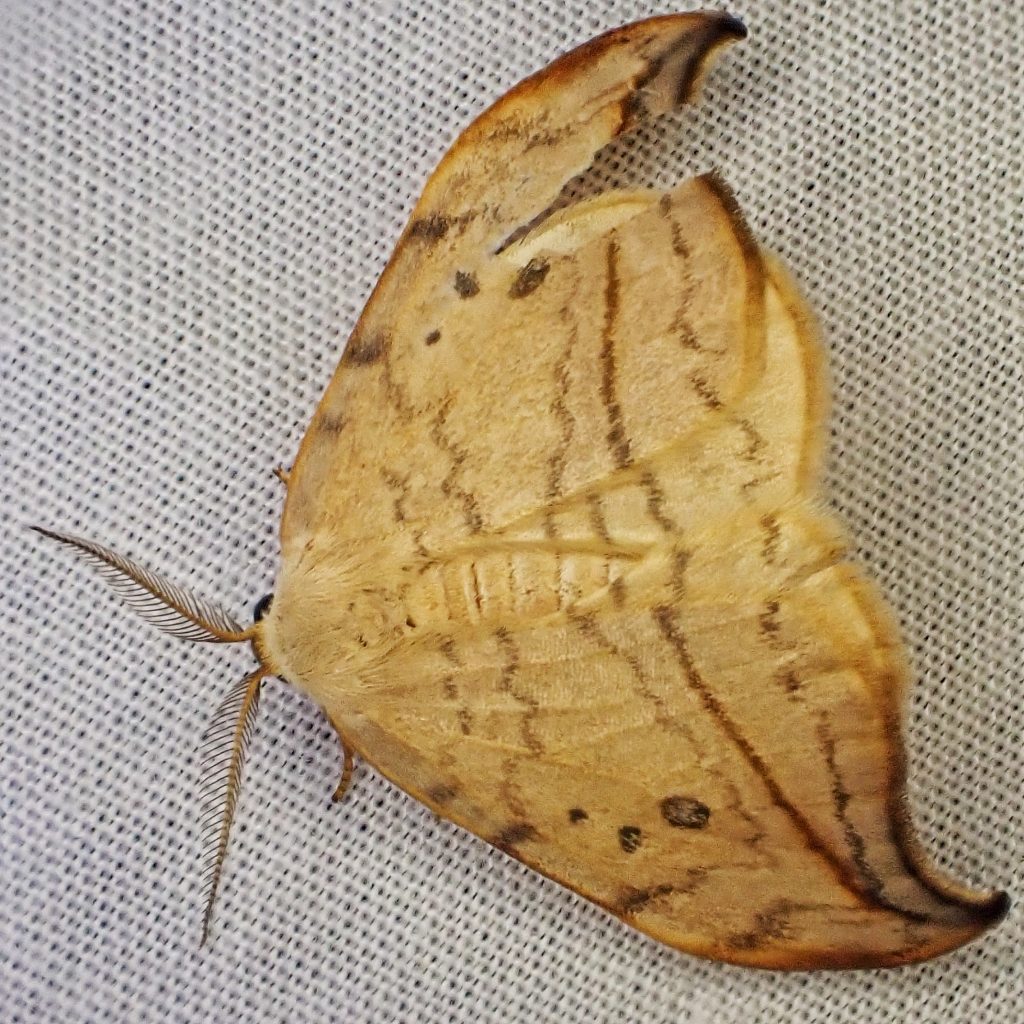
Well, Moth Week 2023 has come and gone. I have more or less resumed my life as a diurnal biped, and reduced my caffeine consumption by about 75%. It was a rather glorious 9 days, and there are many things I learned about moths and habitat, as well as some tactical errors I made that, at times, decreased my enjoyment of the adventures. There was a find of note, the first ever Orgyia vetusta (Western Tussock Moth) documented in the state of Washington, as well as the plebeian realization of how nearly ubiquitous (and yet wildly variable in coloration) Cosmia praeacuta is at this time of year. But my most enduring memory will no doubt be kneeling between the sheets, on that spectacular 7th Night of Moth Week, while dozens of moths swirled about my head, and dozens more perched and crawled on every available surface, and trying to grok in the fullness of the multiplicity of forms and colors and patterns that life, in the guises of moths, was displaying before me.
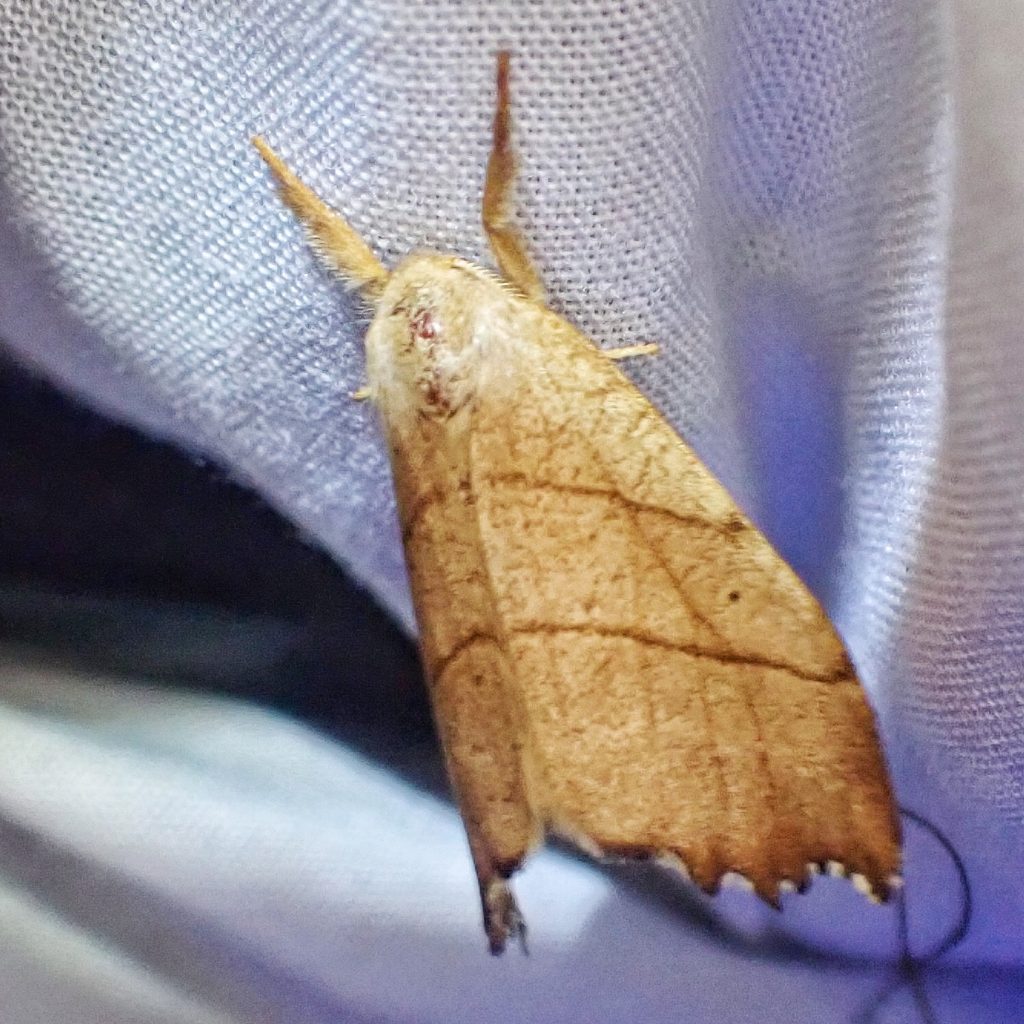
One thing that I will not do the next time I set out to celebrate Moth Week, is to set a numbers goal on it. I did manage to find my hundred species, and even accomplished it with one night to go, but I noticed both that it put an onus of failure on some nights that were only poor in terms of new species for that tally but were otherwise rich with bug life, and added some pressure to not miss any new species on other nights, and even slight disappointment when I realized that a particular moth wasn’t something new, but yet another variation of Hemeroplanis historialis or Cosmia praeacuta. You’d think that after 62 years on this planet I would have learned not to set personal goals about things I can’t control, but apparently I have not. Yet.
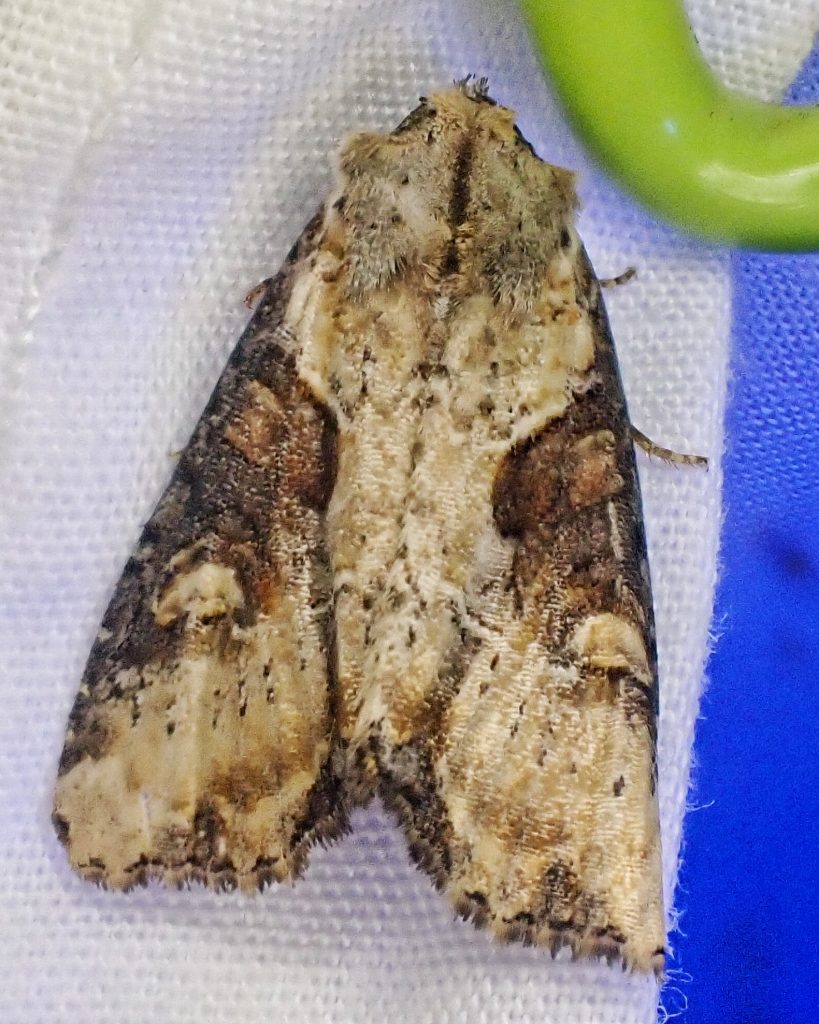
Another thing I would do differently is to go into training beforehand, so to speak. I purposefully avoided mothing in the weeks leading up to Moth Week, because I didn’t want to be burnt out when that time came, I didn’t want to burn out my readers on moths before we reached that celebration, and I utterly failed to realize how drastically my moth identification skill had eroded. Boning up on at least the most common moths flying in mid-summer would have saved me a few hours of work each day, would have alleviated some of the pressure of processing the previous night’s moths before getting a new batch, and would have made my photographing of moths at the lights more efficient.
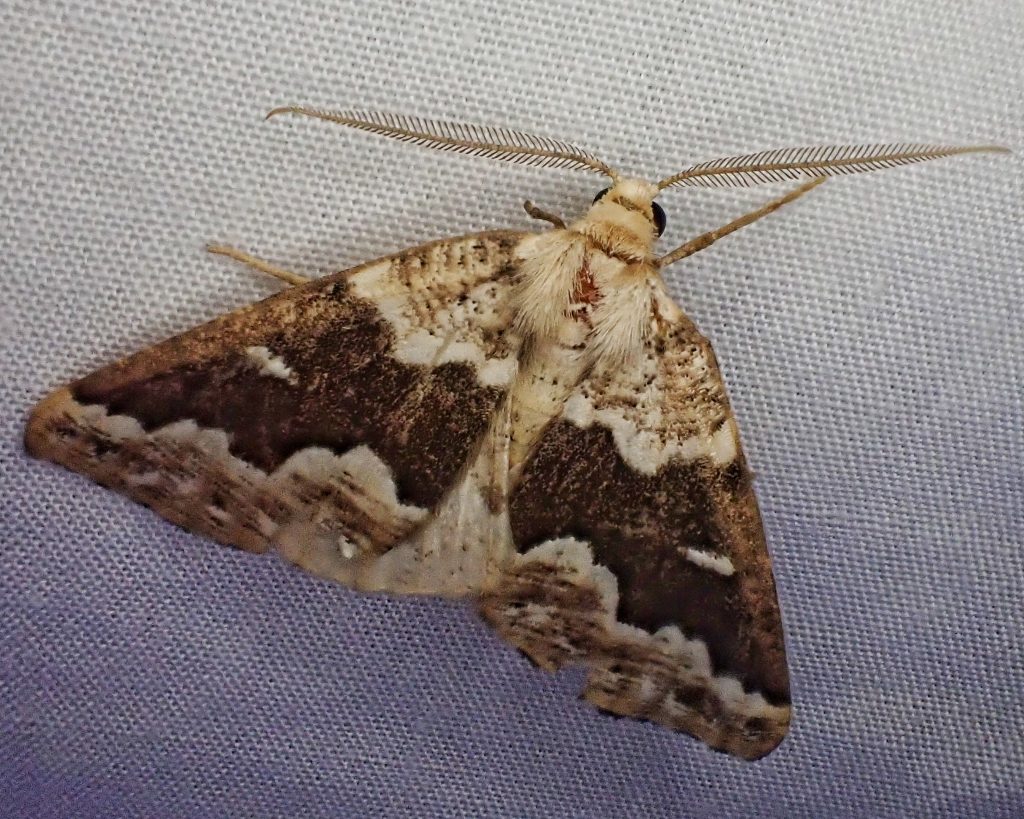
I feel like I learned something about where to set up my lights in a given habitat. I had always placed my Temple of Ultraviolet Light in open areas, if they were available, under the assumption that I wanted it to be visible to the widest area possible. But now I think that finding spots that offer shelter from the wind might be even more important. There is also the fact that areas under a tree canopy don’t lose the day’s heat nearly as quickly as those in the open, and those along a watercourse lose that heat even more quickly.
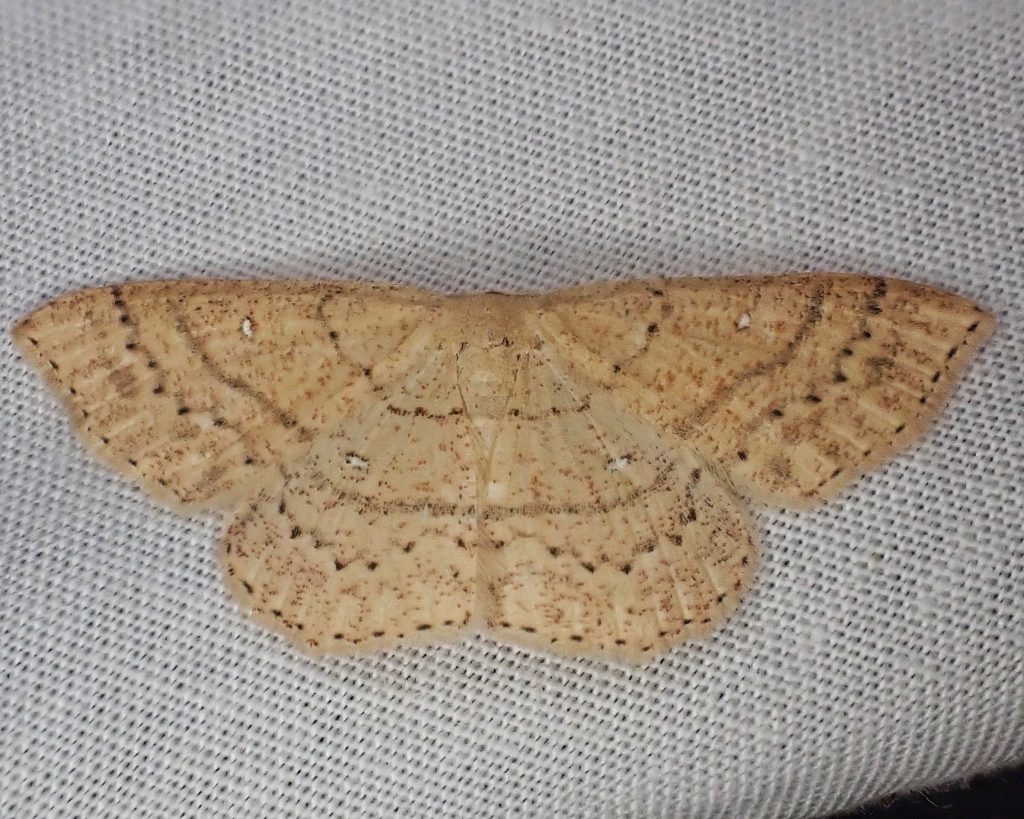
I also think that next time, if I do any residential mothing, I would be more inclined to choose places with less light pollution. My dad’s house was the only residential or urban locale where I didn’t feel that there was a lot of competition from other light sources, and it was also by far the most productive of those locations. I’m also not sure I would confine myself to Clark County again, although if I thought ahead and got permission/access to some places in relatively wild areas in the middle of the county, that were also somewhat different habitat types, it could be productive and enlightening.
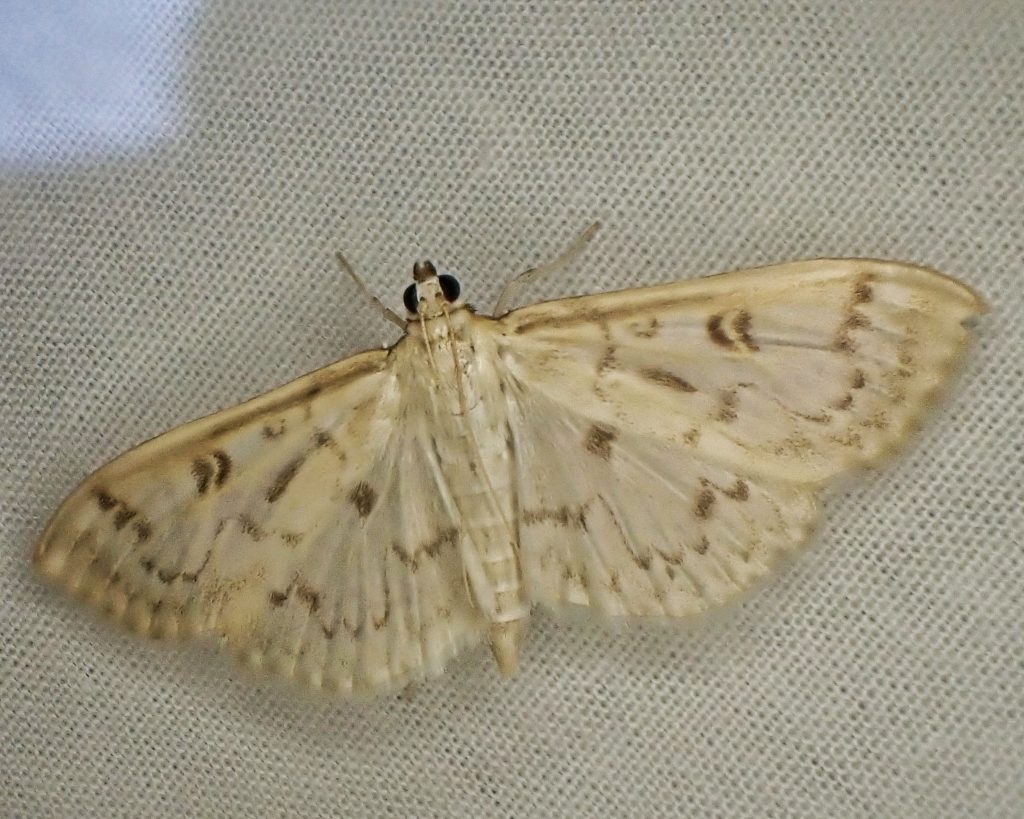
But, for the most part, these are all minor tweaks, and even if another Moth Week went exactly like this one did, I’d be happy to do it, because, overall, it was a ton’o’fun! There are probably other species of moths that I saw, and possibly even photographed, during the 9 days of Moth Week, but these 113 species in 16 families are the ones I can positively identify;
Autostichidae
Symmoca signatella
Cossidae
Acossus populi (Aspen Carpenterworm Moth)
Crambidae-
Anania tertialis
Chalcoela iphitalis (Sooty-winged Chalcoela)
Chrysoteuchia topiarius
Dicymolomia metalliferalis
Elophila obliteralis
Udea profundalis-
Depressariidae
Drepanidae
Drepana arcuata (Arched Hooktip Moth)
Drepana bilineata
Habrosyne scripta (Lettered Habrosyne)
Pseudothyatira cymatophoroides (Tufted Thyatrin)
Erebidae-
Bleptina caradrinalis
Clemensia albata
Dasychira vagans
Hemeroplanis historialis-
Hypena abalienalis
Hypena bijugalis (Dimorphic Bomolocha Moth)
Hypena palparia
Idia americalis
Lophocampa maculata (Spotted Tussock Moth)
Orgyia antiqua
Orgyia pseudotsugata
Orgyia vetusta
Pyrrharctia Isabella (Isabella Tiger Moth)
Rivula propinqualis
Scoliopteryx libatrix (Herald)
Spilosoma virginica
Zale lunata (Lunate Zale Moth)
Zanclognatha jacchusalis
Geometridae-
Anavitrinella pampinaria
Caripeta divisata (Grey Spruce Looper Moth)
Ceratodalia gueneata
Costaconvexa centrostrigaria-
Cyclophora dataria-
Cyclophora pendulinaria (Pearly- grey Wave)
Dysstroma citrata (Dark Marbled Carpet Moth)
Ecliptopera silaceata (Small Phoenix Moth)
Epirrhoe alternata
Euchlaena tigrinaria
Euphyia intermediata
Eupithecia johnstoni
Eulithis xylina
Gabriola dyari (Dyar’s Looper)
Hesperumia sulphuraria
Idaea demissaria
Idaea dimidiata
Iridopsis emasculatum
Macaria lorquinaria (Lorquin’s Angle Moth)
Macaria signaria-
Mesoleuca ruficillata
Neoalcis californiaria
Perizoma curvilinea
Perizoma grandis
Plagodis phlogosaria
Prochoerodes forficaria
Selenia alciphearia
Trichodezia californiata
Xanthorhoe ferrugata
Xanthorhoe labradorensis (Labrador Carpet Moth)
Lasiocampidae
Malacosoma disstria
Momphidae
Mompha circumscriptella
Noctuidae-
Adelphagrotis stellaris
Agrotis ipsilon
Amphipyra tragopoginis (Mouse Moth)
Anaplectoides prasina (Green Arches Moth)
Anhimella perbrunnea
Apamea amputatrix-
Apamea devastator
Autographa californica
Cosmia praeacuta-
Dargida procinctus (Olive Green Cutworm Moth)
Diarsia esurialis
Diarsia rosaria
Eosphoropteryx thyatyroides (Pink-patched Looper Moth)
Feltia herilis (Master’s Dart)
Galgula partita (Wedgling Moth)
Lacinipolia subjuncta
Lateroligia ophiogramma
Melanchra adjuncta
Mesapamea secalis
Mythimna unipuncta
Noctua pronuba (Large Yellow Underwing)
Ochropleura implecta
Panthea virginarius (Cascades Panthea)
Properigea albimacula
Proxenus miranda
Pseudorthodes irrorata
Raphia frater (The Brother)
Spodoptera praefica
Xestia c-nigrum
Zotheca tranquilla
Notodontidae-
Coelodasys unicornis (Unicorn Prominent)
Furcula scolopendrina (Zigzag Furcula)
Gluphisia sp., probably septentrionis
Nadata gibbosa (White-dotted Prominent)
Oedemasia semirufescens
Schizura ipomaeae
Pyralidae
Acrobasis tricolorella
Euzophera semifuneralis
Sphingidae
Tineidae
Morophagoides burkerella
Tortricidae-
Cydia pomonella
Orthotaenia undulana
Uraniidae
Callizzia amorata (Gray Scoopwing Moth)
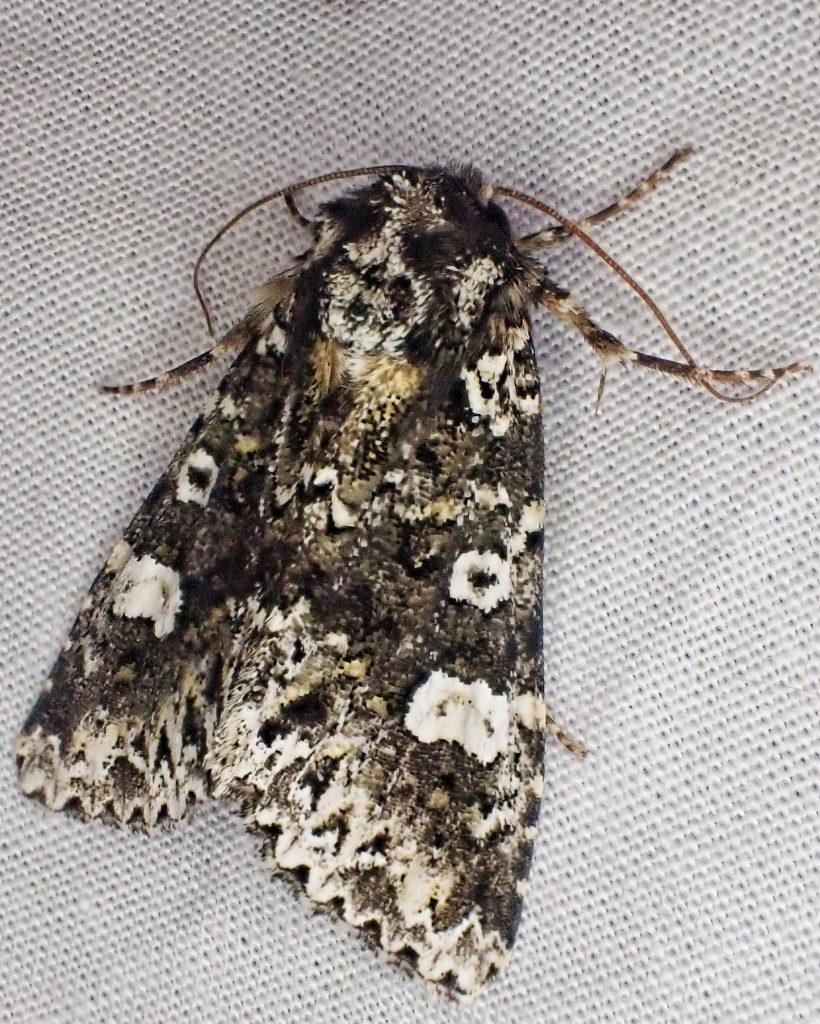
REALLY enjoyed your moth week. It gave me a new appreciation of how beautiful they are.
Thank you for your appreciation, Sharon! It has made me happy to share this with folks!
Magnificent. Thanks for sharing the journey!
It makes me happy that you enjoyed the ride, David!
Never thought I’d say “thanks for mothing” … but here I go: thank you. Love learning and love reading about your process, too. Guess I’ll pencil it in on my calendar for next year! Cool stuff!.. You know what they say” mothing ventured, mothing gained”. Well done!
Thanks Bonnie! I’m glad you enjoyed them! And kudos on working in 3 moth puns in one paragraph!
Thank you for your sharing your experiences with us. I relived some of the mothing experiences of the last 20 years I had when reading about your joy and excitement.
Thanks for your appreciation, Norma! Glad I could help bring up good memories!
Thanks! I loved your Moth Week series.
I had subscribed to you at least a year ago, and received you messages regularly until about January 2023.
Then, recently, I discovered that your messages had landed in the spam folder.
I have yet to learn how to avoid that.
I marvel at the quality of your images.
Could you please let me know:
What type of clack light you use
What camera equipment you employ.
I have done a bit of mothing year round here in Metchosin on
Southern Vancouver Island and have documented about 300
moth species. However lately my yield decined to almost zero.
I suspect the “Spongy Moth” Aerial spraying with BTk has
something to do with it. But My light source may also be
suboptimal.
So, any help would be appreciated!
Hi Jochen! Glad you’re back and enjoyed the Moth Week series. My primary lights are 12v ones I got through BioQuip, but they went out of business, so I don’t know what to recommend. I use an Olympus TG 5 in the field, and a TG 6 at home. Both of them have built in photo stacking.
You’re probably right that the BTk spraying is wrecking your mothing. Seems there should be a better way!